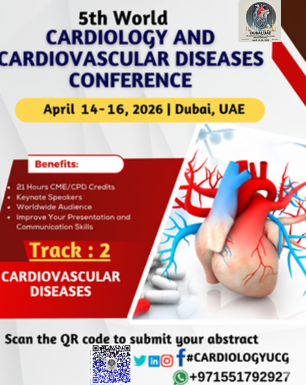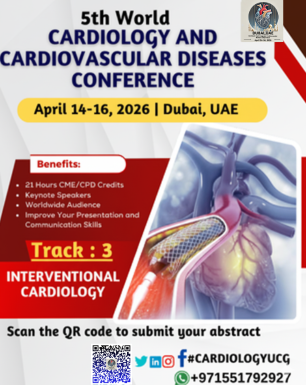Sub tracts of cardiovascular-surgery:
Coronary Artery Bypass Grafting (CABG), Heart Valve Surgery, Aortic Aneurysm Repair, Aortic Dissection Surgery, Minimally Invasive Cardiac Surgery, Heart Transplantation, Transcatheter Aortic Valve Replacement (TAVR), Ventricular Assist Devices (VAD), Endovascular Aneurysm Repair (EVAR), Mitral Valve Repair and Replacement, Aortic Valve Surgery, Pulmonary Artery Surgery, Coronary Artery Disease Surgery, Off-Pump Coronary Artery Bypass,
An overview of cardiovascular-surgery History :
Cardiovascular surgery has a fascinating and transformative history that
spans centuries. The field has evolved from rudimentary attempts to treat heart
diseases to becoming one of the most advanced areas of modern medicine. Here’s
an overview of its key milestones:
Early Beginnings:
1.
Ancient
Times:
- The
earliest recorded attempts at treating heart ailments can be traced back
to ancient civilizations like the Egyptians, Greeks, and Romans. However,
the understanding of heart function was limited, and surgical
interventions for heart disease were virtually nonexistent. The Egyptians
had some knowledge of anatomy and might have performed simple procedures,
but cardiac surgery as we know it did not exist.
2.
Renaissance
and 17th Century:
- During
the Renaissance, the study of human anatomy advanced significantly.
Andreas Vesalius (1514–1564) and William Harvey (1578–1657) made
groundbreaking discoveries related to the circulatory system and the
heart’s function, laying the groundwork for later surgical interventions.
Early Attempts at Cardiac Surgery
(19th Century):
3.
First
Open Heart Surgery (1896):
- The
first attempts at open heart surgery were made in the late 19th century.
In 1896, Dr.
Ludwig Rehn performed the first successful surgery to
repair a stab wound to the heart in Frankfurt, Germany. This was a major
milestone, though open heart surgery on a non-traumatic heart condition
was still not feasible.
4.
Development
of Anesthesia:
- In
the mid-19th century, the discovery of anesthesia by William Morton and James Simpson
revolutionized surgery, including cardiac surgery, by making long and
complex procedures tolerable for patients.
The 20th Century: The Rise of Modern
Cardiovascular Surgery
5.
Early
1900s – Cardiac Surgery Beginnings:
- The
first heart surgeries for congenital heart defects were performed in the
early 20th century. However, the outcomes were not always favorable due
to a lack of knowledge about the heart’s functioning and limited surgical
techniques.
6.
The 1920s
– Heart Surgery Developments:
- Dr. Elliott Cutler of
Harvard performed the first successful repair of a congenital heart
defect in 1926. This period marked the early days of heart surgery,
primarily addressing congenital defects and simple conditions.
7.
1930s -
Use of Cardiac Catheters:
- Dr. Werner Forssmann in
1929 made a breakthrough with the development of cardiac catheterization,
a procedure that later became fundamental to diagnosing and treating
heart diseases. His pioneering work earned him a Nobel Prize in
Physiology in 1956.
8.
1940s –
World War II and Surgical Advances:
- The
demand for treating injuries during WWII accelerated advancements in
trauma surgery, including cardiac procedures. Innovations in blood
transfusions, aseptic techniques, and general surgery improved the
success of heart surgery.
9.
1950s –
Heart-Lung Machine:
- A
major leap forward came in the 1950s when the heart-lung machine was
developed. This device allowed surgeons to temporarily take over the
function of the heart and lungs during surgery, enabling the surgeon to
perform complex heart procedures while the heart was temporarily stopped.
Dr. John Gibbon
successfully used this machine in 1953 during the first open heart
surgery for an atrial septal defect.
10. 1960s – Coronary Artery Bypass Grafting (CABG):
- The
development of coronary artery bypass grafting (CABG) in the 1960s,
pioneered by Dr.
René Favaloro, revolutionized the treatment of coronary
artery disease. The technique involved using a vessel from another part
of the body to bypass blocked coronary arteries, restoring blood flow to
the heart.
11. 1967 – First Heart Transplant:
- In
December 1967, Dr.
Christiaan Barnard performed the world’s first successful
human heart transplant in South Africa. This groundbreaking achievement
opened a new frontier in treating patients with end-stage heart failure,
although challenges such as organ rejection and immunosuppression
followed.
Modern Advances in Cardiovascular
Surgery:
12. 1970s – Minimally Invasive Techniques:
- In
the 1970s and 1980s, there was growing interest in developing minimally
invasive techniques. Percutaneous
coronary interventions (PCI), such as angioplasty and stenting, were introduced,
offering an alternative to open surgery for treating blocked coronary
arteries.
13. 1990s – Endovascular Surgery:
- The
1990s saw the rise of endovascular
surgery for treating vascular diseases, including aortic
aneurysms and peripheral artery disease. This technique, using catheters
and stents inserted through small incisions, minimized recovery time and
complications compared to traditional open surgery.
14. 2000s – Robotic-Assisted Surgery:
- The
advent of robotic-assisted
cardiovascular surgery brought further advancements,
allowing surgeons to perform highly precise operations with smaller
incisions, reduced pain, and faster recovery times. Systems like the da Vinci surgical system
have been widely used for coronary artery bypass and valve surgery.
15. 2010s – Transcatheter Valve Technologies:
- The
introduction of transcatheter
aortic valve replacement (TAVR) revolutionized the
treatment of severe aortic valve stenosis, offering a less invasive
alternative to traditional open surgery, especially for high-risk
patients.
16. Present Day – Focus on Personalized and Hybrid
Approaches:
- Modern
cardiovascular surgery is increasingly focused on personalized care,
integrating advanced imaging, genetic testing, and hybrid procedures
combining both surgical and interventional techniques. Surgeons are now
able to treat complex heart conditions with less invasive methods and
improved precision.
Key Trends and Innovations Today:
- Regenerative Medicine and Stem Cell
Therapy: Research is exploring the potential of stem cells
to regenerate damaged heart tissue and improve heart function.
- Minimally Invasive and Robotic Surgery:
Continued innovations in minimally invasive techniques, including
robotic-assisted surgeries, allow for more precise operations and quicker
recovery times.
- Hybrid Approaches:
Combining surgery with catheter-based interventions allows for better
outcomes in complex cases, such as valve repair and coronary artery
disease treatment.





